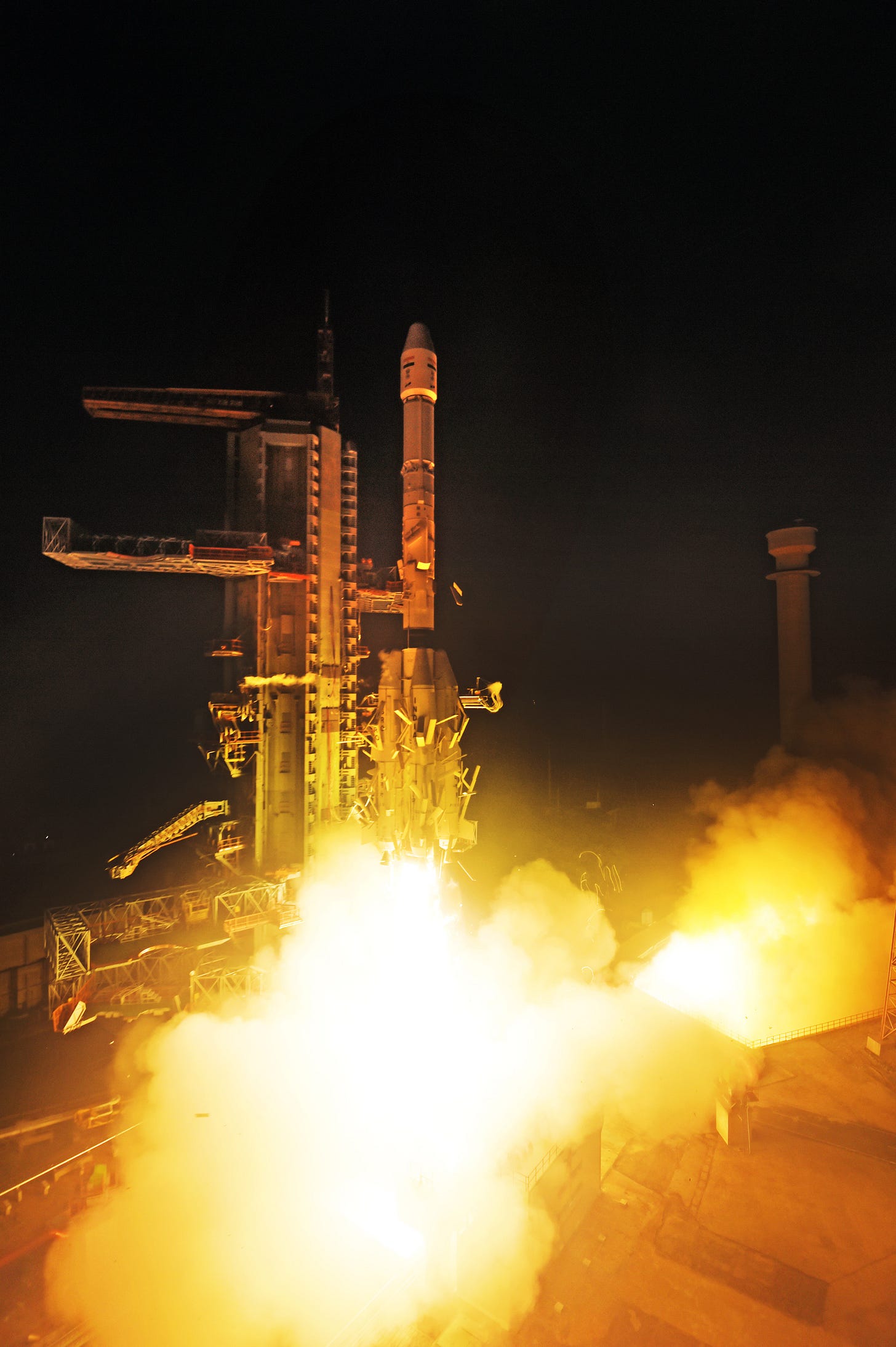I missed sending out this edition last Thursday because I was not well. Sorry.
I wrote about the status of various payloads of SpaDex and POEM-4 and the change of guard at ISRO for the latest edition of India in Space column [this is paywalled but it allows a fixed amount of visits for free] for The Hindu.
I will be talking about trends in space technology and policy for India at The Takshashila Institution on 31 January 2025.
This has a reading time of about 5 minutes for you.
I have been following GSLV launches since 2005, a time when their success rate was far from reassuring. Each launch filled me with anxiety, especially given the challenges India faced in mastering cryogenic technology. However, with the introduction of the indigenous C15 cryogenic stage, India has significantly improved its launch reliability. Even so, I watched this morning’s launch with a sense of trepidation.

A Landmark Mission
ISRO has officially designated this mission as the 100th launch from Sriharikota. However, there is some controversy regarding the count, with debates over the inclusion of a couple of previous launches.
This mission was particularly significant as it marked the first launch under the leadership of the new ISRO Chairman, Dr. V. Narayanan. Previously the Director of the Liquid Propulsion Systems Centre (LPSC), Dr. Narayanan played a key role in developing India's cryogenic technology. Given his expertise, a GSLV launch seemed like the perfect way to begin his tenure.
The GSLV Configuration
The GSLV is a three-stage launch vehicle, incorporating both solid and liquid stages:
First stage: A solid S-139 booster, augmented by four liquid strap-on motors (L40H).
Second stage: Powered by the Vikas engine.
Third stage: A cryogenic upper stage.
A successful mission would serve as a fitting tribute to the Chairman’s contributions to cryogenic propulsion.
The Launch Sequence
The launch process began with the ignition of the liquid strap-on motors (L40H) four seconds before lift-off, providing initial thrust. Shortly after, the S-139 solid stage ignited, majestically lifting the vehicle off the pad—a term ISRO often uses in its descriptions.
As the rocket ascended, range cameras appeared slightly shaky, adding to my nervousness. However, the callout for “normal” performance—famously pronounced as “NARMAL,” now a meme in the space community—was reassuring. The stage separation brought an interesting realization: instead of the strap-ons being jettisoned separately, the entire first stage, including the strap-ons, was dropped as a single unit. Looking through past launch records, I found this has always been the case, though I had never noticed before.
A notable aspect of the mission was the hot separation of the second stage, where the Vikas engine ignites just before detaching from the first stage. The recent test of Vikas’ engine restart capability feels like worth mentioning here. This capability is a step toward future reusability, allowing recovered rocket stages to land on land or sea for refurbishment.
The Cryogenic Engine and Final Orbit Injection
There was a brief pause before the cryogenic engine callout, heightening my anxiety. This was understandable, given its history—India's indigenous cryogenic engine failed to start on its debut flight (GSLV-D3 on 15 April 2010) and again as recently as GSLV-F10 on 12 August 2021. Fortunately, today’s ignition was successful.
At the mission’s conclusion, the rocket successfully deployed NVS-02 into its intended orbit. In the post-launch press conference, the Chairman mentioned a minor divergence, though no further details are available on this.
NVS-02: Advancing India’s Navigation Capabilities
NVS-02, also known as IRNSS-1K, is a second-generation navigation satellite, designed to enhance India’s positioning capabilities. Each Indian Regional Navigation Satellite System (IRNSS) satellite carries three atomic clocks. The first generation of these satellites faced multiple atomic clock failures, with nine out of twenty-four clocks failing. As a precaution, ISRO currently operates only one clock per satellite until replacements are deployed.
This new-generation satellite incorporates both indigenously developed and procured atomic clocks and has strategic and commercial applications. It offers:
Positioning accuracy of 20 meters.
Timing accuracy of 20 nanoseconds.
NVS-02 will replace IRNSS-1E and will be stationed at 111.75°E longitude. It features navigation payloads in the L1, L5, and S bands with ranging capabilities in the C band.
Best wishes to the new ISRO Chairman, and see you on the next edition of Pradeep’s Space Newsletter.

